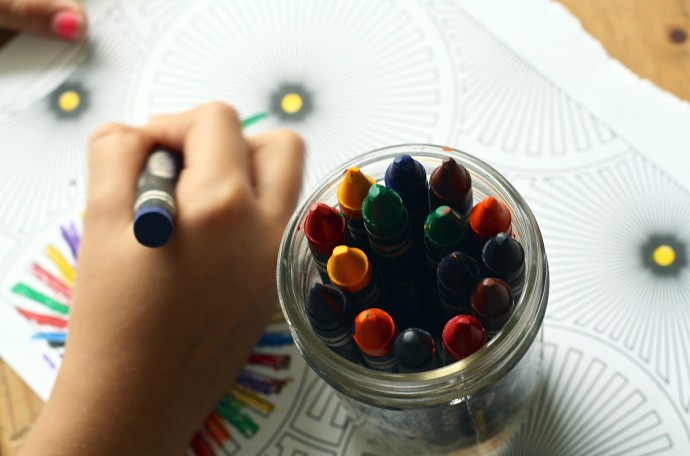“Scientific drawing” using squares is a potential tool for diagnosis and treatment for patients suffering from anorexia nervosa (AN) – a severe psychiatric disease that affects three million people around the world and is characterized by hunger and malnutrition, with a high risk for death.
This surprising idea has been suggested by researchers at Ben-Gurion University of the Negev (BGU) in Beersheba, the Southern District of Clalit Health Services, and the In Volo Center for the Treatment of Eating Disorders in Parma, Italy. They published their findings in the latest issue of IMAJ, the Israel Medical Association Journal.
To date, there is no effective pharmacological therapy, and existing psychotherapy treatment is only partially effective, wrote Dr. Gal Peleg, psychologist Ilaria Sterbizzi, Dr. Roni Peleg and Dr. Yulia Treister-Goltzman.
However, art and medicine have shared a close relationship in a variety of ways for centuries, as demonstrated by anatomical drawings and textbooks from the 16th century.
“There has been evidence for years for the effectiveness of the art of drawing as a diagnostic and treatment tool with improved integration of psychiatric patients into society,” they noted. “Use of the details of the drawing, the different colors, the intensity of the color and various line characteristics are diagnostic tools for different psychiatric conditions and diseases.”

The team asked patients to use the Squares Method of copying pictures and found distorted curves drawn by patients, which did not occur in healthy people. Anorexia is a disease of perception distortion, so changing the way they drew improved their condition, the researcher said.
Psychiatric patients “report that drawing provides a comfort zone for them and helps them to understand themselves and to express the way that they would like to continue their lives,” the team wrote. “Drawing helps them to change their identity and their role, and leads to a significant positive change in personal, emotional and mental aspects.”
“Drawing helps them to change their identity and their role, and leads to a significant positive change in personal, emotional and mental aspects.”
Research team
AN is an eating disorder characterized by low weight, food restriction, fear of gaining weight, an overpowering desire to be thin and body-image disturbance, where patients commonly see themselves as overweight, although they are in fact underweight.
It is much more common in females than males, and advertising, social networks and the media have been blamed for distorting the ideal body image. AN victims also often deny that they have a problem with low weight, but they may weigh themselves frequently, eat small amounts and only eat certain foods. Some exercise excessively, force themselves to vomit, or use laxatives to lose weight and control body shapes and/or binge eat.
The causes of AN are unknown, but there may be some genetic influences. It occurs more often among those involved in activities that value thinness such as intensive athletics, modeling and dancing. Anorexia often begins following a major life-change or stress-inducing event. Medical complications include osteoporosis, infertility and heart damage, and women will often stop having menstrual periods.
Treatment
Treatment involves bringing the patient back to a healthy weight, treating their underlying psychological problems and addressing behaviors that promote them. While medications do not help with weight gain, they may be used to help with anxiety and depression.
The researchers stated that neuropsychological studies in AN patients showed that their primary mental problems are “cognitive inflexibility and an overly detailed processing style.” Art therapy challenges this rigid and perseverative cognition. Drawing requires integrative thinking that sees the big picture. AN patients perceive themselves as fat and choose thin images when drawing ideal bodies.
The “Squares Method” aims at achieving maximum precision by means of copying. The picture to be copied is divided into two-centimeter squares, creating a network of numbered squares. The drawing paper is divided into the same number of squares, making it possible to compare the picture to be copied with the patient’s copy of it.
Drawing workshops
Patients in drawing workshops concentrated much more on the external form and less on internal details. They all had distorted perceptions of curves and instead drew straight lines and sharp angles. In one session, they were asked to draw pictures of themselves using the Squares Method.
When they had to draw body parts with specific phobias such as arms, hips and the pelvis they were very surprised and some cried. “They reported that they understood their body perception was distorted” and were very willing to participate in the drawing therapy.
This nonverbal treatment technique, the authors wrote, is promising as a useful tool to correct the distorted perceptions of pictures by AN patients and leads them to make gradual corrections, and eventually a body shape aligned with reality.
But more studies are needed to determine remission rates and improvement in the patient’s mental states, the researchers said, adding that scientific drawing can also be tested for the treatment of other psychiatric diseases characterized by perception issues.
